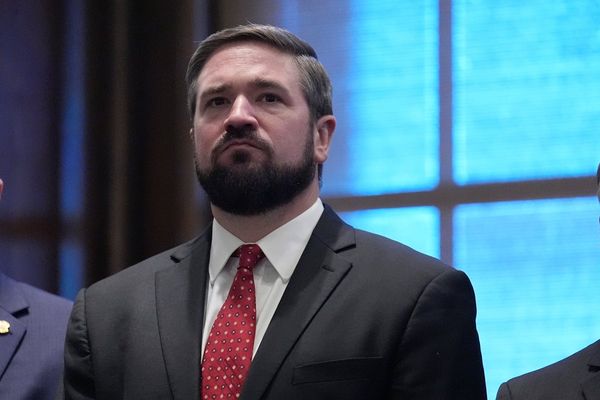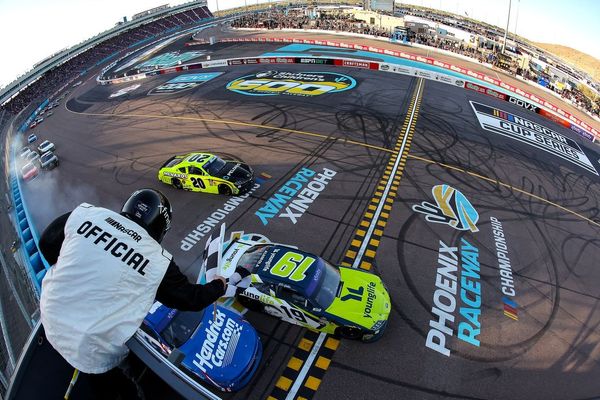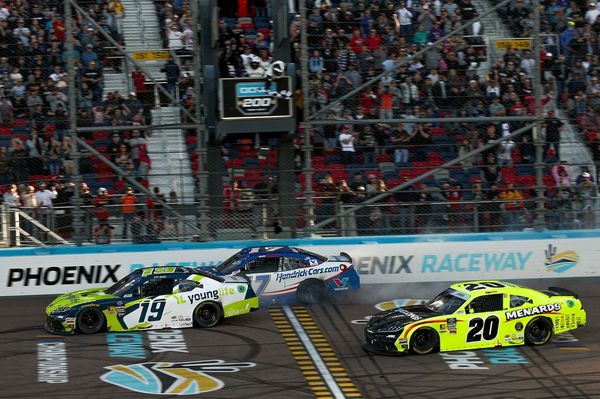
On 26 November, Victorians will vote in the 2022 state election and decide whether to give the Labor government and premier, Daniel Andrews, a third term in office, or if the Coalition, under the opposition leader, Matthew Guy, should take the reins.
It is the first time Victoria will go to the polls since the pandemic, during which Andrews fronted an extraordinary 120 consecutive daily press conferences as Melbourne endured one of the world’s longest lockdowns and the state recorded the nation’s highest death toll.
The government has also endured several political scandals, including allegations of “industrial-scale” branch stacking, which forced the resignation of four ministers and prompted a review of Victorian Labor. More recently, the Age reported that the Independent Broad-based Anti-Corruption Commission has been investigating two grants worth $3.4m to a Labor-aligned union. According to the report, this is the first Ibac inquiry to be directly examining the premier’s conduct.
The opposition has struggled to capitalise on Labor’s woes and is facing its own identity crisis in the wake of the federal election in May, when voters turned away from the Liberals in six blue-ribbon seats in favour of teal independents.
The Greens, meanwhile, are hoping to capitalise on their best-ever performance at the federal poll.
Bookies, polls and pundits have predicted a Labor win. Regardless of the result, the election will redefine the state, chart the future direction of the Liberal party and prove whether the teal revolution is here to stay.
Key dates
Election day is 26 November, though early voting has begun.
In 2018 about 44.6% of Victorians voted early, including by post, and the state electoral commission expects that figure to grow this year, causing a change in campaigning.
Previously, parties saved large, flashy announcements for the final weeks of the campaign, but this year they will ramp it up much earlier.
What’s the current state of play?
Labor won the 2018 election in a “Danslide”, securing more than 57% of the two-party-preferred vote and leaving the Coalition with 27 of the 88 seats in the Legislative Assembly.
To form government, a party needs 45 seats in the lower house. To win outright, the Coalition needs to gain a net 18 seats.
But it enters the 2022 race in a worse position than 2018, thanks to an electoral redistribution.
Three seats in Melbourne’s stagnant eastern suburbs have been abolished – Ferntree Gully (held by the Liberals), Keysborough (Labor) and Mount Waverley (Labor). Three new ones have been created in growing areas: Laverton (Labor), Greenvale (Labor) and Berwick (Liberal).
Four Liberal-held seats (Caulfield, Hastings, Gembrook, renamed Pakenham, and Ripon) have become marginally Labor, while only two seats have turned blue from red (Bayswater and Bass). Mildura, currently held by the independent Ali Cupper, becomes an ultra-marginal Nationals seat.
So Labor has a notional 58 seats compared with the 55 it won in 2018, while the Liberals are down from 21 to 19.
What are the key issues and what’s been promised?
The pandemic has exposed weaknesses in Victoria’s health system, through deadly triple-zero delays, ambulance ramping, overcrowding in emergency departments and lengthy elective surgery waitlists.
In May, Labor pledged $12bn to overhaul the system, but the opposition says the “mismanagement and neglect” will continue under Andrews.
The Coalition pledged to shelve the first stage of the government’s Suburban Rail Loop project to fund new hospitals and upgrades, including in Benambra, Caulfield, Mildura, Nepean and Sandringham. They are also offering $500 vouchers for those on the state’s dental wait list to access treatment at private clinics.
Labor has announced upgrades for the Austin, Northern and Wonthaggi hospitals, as well as a new hospital for West Gippsland and the redevelopment and renaming of Maroondah hospital after Queen Elizabeth II (which has not gone down well). With the exception of the West Gippsland hospital all are in Labor seats. It’s also pledged $44m for medical equipment for eight hospitals across the state.
Education is also an important issue. Labor has announced $1.6bn to upgrade 89 public schools and build 25 new ones in growth suburbs, as well as $750m for Catholic and independent schools and a $207m package for specialist schools, including the rollout of after-school care. Several schools on the government’s list for upgrades had earlier been promised funds by the opposition for works.
Integrity, which was a key theme at the federal election, is also likely to sway votes in Victoria. It has been revealed the chief of staff for Guy proposed to ask a Liberal party donor to make more than $100,000 in payments to his business. Labor seized on the scandal, but it has also endured several of its own since coming to office. Expect both the independents and Greens to take up this theme.
With costs of living continuing to rise, both major parties are expected to announce further measures to ease the burden on households. The Coalition has pledged to cap public transport at $2 a day, halve V/Line fares and provide free public transport for healthcare workers.
Labor has announced it would slash the price of regional public transport to bring it in line with metropolitan fares. The commitment would see a daily V/Line ticket capped at $9.20 for a full fare or $4.60 for a concession.
Labor has also announced a plan to set up a state-controlled renewable energy company, which it says will push down power prices in the long term. In the interim, each Victorian household that seeks a better power deal will be able to claim another power-saving bonus of $250 off their electricity bills from March 2023.
The Coalition has also promised to bring down power bills by cutting the electricity supply charge for six months, saving households an estimated $235.
Guy has stated gas is central to the Coalition’s long-term plan for household savings. He has committed to reserving all gas from new conventional onshore projects for Victorian households and manufacturing. However, experts are sceptical, given there is very little onshore gas exploration underway.
Which are the main seats to watch?
It used to be that there was a handful of marginal seats to watch each election. But with time and demographic changes, more parts of the state have become contestable and there are several themes at play.
Independent candidates are running across the state, including in Hawthorn and Kew, which overlap the federal seat of Kooyong, where Monique Ryan toppled Liberal minister Josh Frydenberg.
Simon Holmes à Court’s outfit, Climate 200, backed teal candidates at a federal level and is directing supporters to donate to four Victorian independents running in Caulfield, Hawthorn, Kew and Mornington.
Other independents are running across the state, including Felicity Frederico in Brighton and Clarke Martin in Sandringham, both in Melbourne’s bayside where Zoe Daniel won Goldstein off Liberal Tim Wilson at the federal election.
In Melton and Point Cook, in Melbourne’s growing west, Labor is fending off independent challengers of a different kind – prominent locals hoping to make the “safe seats” marginal in an effort to get funding for much-needed infrastructure.
Labor is facing stiff competition from the Greens in Richmond and Albert Park, where long-serving MPs are retiring, and in Northcote, which is on a slim margin of 1.7%.
Cupper will be fighting to retain Mildura, while Jacqui Hawkins is contesting Benambra as an independent for the second time. Both women consider themselves “yellow” independents – more in the mould of the federal Indi MP, Helen Haines.
In Morwell, Labor hopes to regain the seat held by the independent MP Russell Northe, who is retiring.
The Liberals also hope to win back eastern Melbourne seats that Labor unexpectedly took in 2018, including Bayswater, Box Hill and Ringwood.
What about the upper house?
The results in the Legislative Council will play an important role in the shaping of the parliament.
The government needs the support of the upper house to pass laws.
Labor is expect to lose several seats in the upper house, while the crossbench is expected to grow, with parties such as Family First Victoria and Clive Palmer’s United Australia party expected to contest the election.
Victoria is the only jurisdiction in Australia that uses a particular group voting system, which allows voters to choose just one party above the line on their ballot, after which their preferences are directed according to agreements between parties. The ABC election analyst, Antony Green, has said the system is an “absolute abrogation of democracy”.







